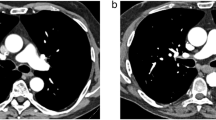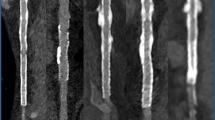Abstract
Background
This study assessed the reproducibility and accuracy of 2-deoxy-2[18F]fluoro-d-glucose (18F-FDG) for non-invasive quantification of myocardial infarct size in mice by a high-resolution positron emission tomography (PET)/computed tomography (CT) system.
Methods and Results
Mice were studied by 18F-FDG PET/CT 1 week after induction of myocardial infarction by permanent coronary occlusion or sham procedure. In a subset of mice, PET/CT was repeated 2 days apart to assess the reproducibility of infarct size measurements. Histological analysis was used as reference method to validate imaging data. The average difference in infarct size measurements between the first and the second study was −0.42% ± 2.07% (95% confidence interval −2.6 to 1.75) with a repeatability coefficient of 4.05%. At Bland-Altman analysis, the lower and upper limits of agreement between the two repeated studies were −4.46% and 3.63%, respectively, and no correlation between difference and mean was found (P = .89). The concordance correlation coefficient was 0.99 (P < .001) and the intraclass coefficient of correlation was 0.99. A high correlation between PET/CT and histology was found for measurement of infarct size (P < .001). Using Bland-Altman analysis, the mean difference in infarct size measurement (PET/CT minus histology) was 1.9% (95% confidence interval 0.94% to 2.86%).
Conclusions
In a mice model of permanent coronary occlusion non-invasive measurement of infarct size with high-resolution 18F-FDG, PET/CT has excellent reproducibility and accuracy. These findings support the use of this methodology in serial studies.







Similar content being viewed by others
References
Higuchi T, Nekolla SG, Jankaukas A, Weber AW, Huisman MC, Reder S, et al. Characterization of normal and infarcted rat myocardium using a combination of small-animal PET and clinical MRI. J Nucl Med 2007;48:288-94.
Stegger L, Hoffmeier AN, Schäfers KP, Hermann S, Schober O, Schäfers MA, et al. Accurate noninvasive measurement of infarct size in mice with high-resolution PET. J Nucl Med 2006;47:1837-44.
Klocke R, Tian W, Kuhlmann MT, Nikol S. Surgical animal models of heart failure related to coronary heart disease. Cardiovasc Res 2007;74:29-38.
Ratering D, Baltes C, Dörries C, Rudin M. Accelerated cardiovascular magnetic resonance of the mouse heart using self-gated parallel imaging strategies does not compromise accuracy of structural and functional measures. J Cardiovasc Magn Reson 2010;12:43-55.
Kudo T, Fukuchi K, Annala AJ, Chatziioannou AF, Allada V, Dahlbom M, et al. Noninvasive measurement of myocardial activity concentrations and perfusion defect sizes in rats with a new small-animal positron emission tomograph. Circulation 2002;106:118-23.
Liu Z, Kastis GA, Stevenson GD, Barrett HH, Furenlid LR, Kupinski MA, et al. Quantitative analysis of acute myocardial infarct in rat hearts with ischemia-reperfusion using a high-resolution stationary SPECT system. J Nucl Med 2002;43:933-9.
Wu MC, Gao DW, Sievers RE, Lee RJ, Hasegawa BH, Dae MW. Pinhole single-photon emission computed tomography for myocardial perfusion imaging of mice. J Am Coll Cardiol 2003;42:576-82.
Nekolla SG, Miethaner C, Nguyen N, Ziegler SI, Schwaiger M. Reproducibility of polar map generation and assessment of defect severity and extent assessment in myocardial perfusion imaging using positron emission tomography. Eur J Nucl Med 1998;25:1313-21.
Oh BH, Ono S, Rockman HA, Ross J Jr. Myocardial hypertrophy in the ischemic zone induced by exercise in rats after coronary reperfusion. Circulation 1993;87:598-607.
Lin LI-K. A concordance correlation coefficient to evaluate reproducibility. Biometrics 1989;45:255-68.
Shrout PE, Fleiss J. Intraclass correlations: Uses in assessing rater reliability. Psychol Bull 1979;86:420-8.
McGraw KO, Wong SP. Forming inferences about some intraclass correlation coefficients. Psychol Methods 1996;l:30-46.
Bland JM, Altman DG. Statistical methods for assessing agreement between two methods of clinical measurements. Lancet 1986;12:307-10.
Saraste A, Nekolla SG, Schwaiger M. Cardiovascular molecular imaging: An overview. Cardiovasc Res 2009;83:643-52.
Ferro A, Pellegrino T, Spinelli L, Acampa W, Petretta M, Cuocolo A. Comparison between dobutamine echocardiography and single-photon emission computed tomography for interpretive reproducibility. Am J Cardiol 2007;100:1239-44.
Scherrer-Crosbie M, Steudel W, Ullrich R, Hunziker PR, Liel-Cohen N, Newell J, et al. Echocardiographic determination of risk area size in a murine model of myocardial ischemia. Am J Physiol Heart Circ Physiol 1999;277:H986-92.
Wollenweber T, Zach C, Rischpler C, Fischer R, Nowak S, Nekolla SG, et al. Myocardial perfusion imaging is feasible for infarct size quantification in mice using a clinical single-photon emission computed tomography system equipped with pinhole collimators. Mol Imaging Biol 2010;12:427-34.
Conci E, Pachinger O, Metzler B. Mouse models for myocardial ischaemia/reperfusion. J Cardiol 2006;13:239-44.
Hashimoto K, Uehara T, Ishida Y, Nonogi H, Kusuoka H, Nishimura T. Paradoxical uptake of F-18 fluorodeoxyglucose by successfully reperfused myocardium during the sub-acute phase in patients with acute myocardial infarction. Ann Nucl Med 1996;10:93-8.
Lee WW, Marinelli B, van der Laan AM, Sena BF, Gorbatov R, Leuschner F, et al. PET/MRI of inflammation in myocardial infarction. J Am Coll Cardiol 2012;59:153-63.
Acknowledgment
The authors have indicated that they have no financial conflicts of interest.
Author information
Authors and Affiliations
Corresponding author
Additional information
Adelaide Greco and Maria Piera Petretta contributed equally to this work.
Rights and permissions
About this article
Cite this article
Greco, A., Petretta, M.P., Larobina, M. et al. Reproducibility and accuracy of non-invasive measurement of infarct size in mice with high-resolution PET/CT. J. Nucl. Cardiol. 19, 492–499 (2012). https://doi.org/10.1007/s12350-012-9538-5
Received:
Accepted:
Published:
Issue Date:
DOI: https://doi.org/10.1007/s12350-012-9538-5




